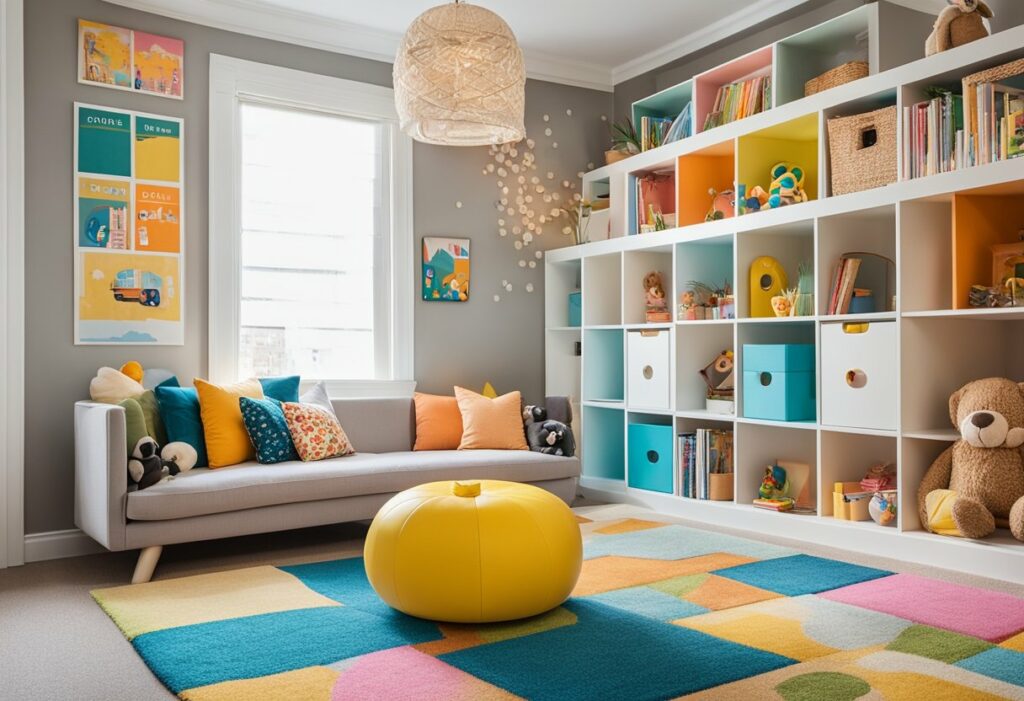Children’s Interior Design: Create a Dreamy Space for Your Little Ones
If you’re a parent, you know that creating a space that your child loves is essential. A child’s bedroom is not only a place to sleep, but it’s also a place to play, learn, and grow. That’s where children’s interior design comes in. It’s the art of designing a space that is not only functional but also enchanting and inspiring for children.
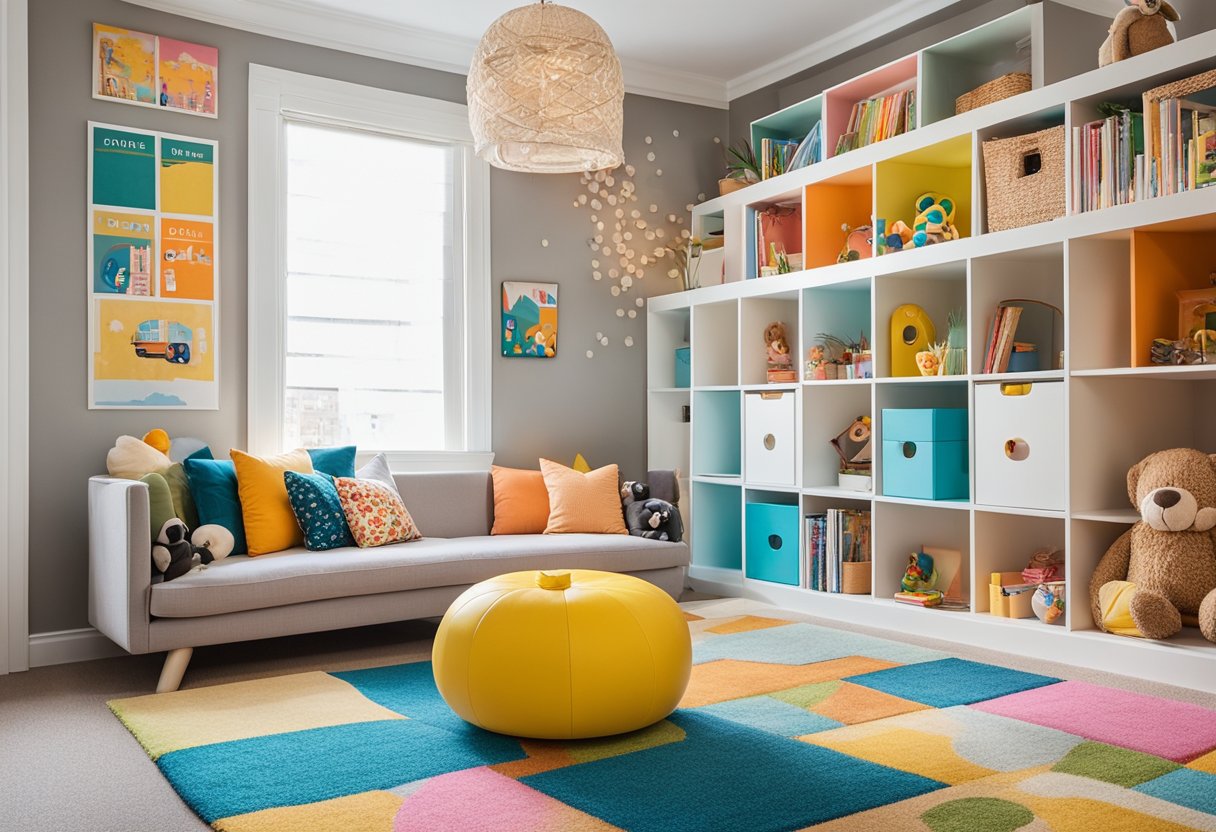
Foundations of Children’s Interior Design are based on a few key principles. One of the most important is safety. A child’s bedroom should be a safe space, free from hazards such as sharp edges, loose cords, and unstable furniture. Another essential principle is functionality. A child’s bedroom should be designed to meet their needs, with plenty of storage for toys and clothes, and a layout that allows for easy movement around the room.
Creating Enchanting Spaces is the fun part of children’s interior design. It’s where you get to let your creativity run wild and create a space that reflects your child’s personality and interests. From choosing the right colours and patterns to selecting the perfect bedding and accessories, every detail counts. The goal is to create a space that your child loves and that inspires their imagination.
Key Takeaways
- Children’s interior design is about creating a safe and functional space that is also enchanting and inspiring for children.
- The foundations of children’s interior design are based on safety and functionality.
- Creating enchanting spaces is the fun part of children’s interior design, where you get to let your creativity run wild and create a space that reflects your child’s personality and interests.
Foundations of Children’s Interior Design
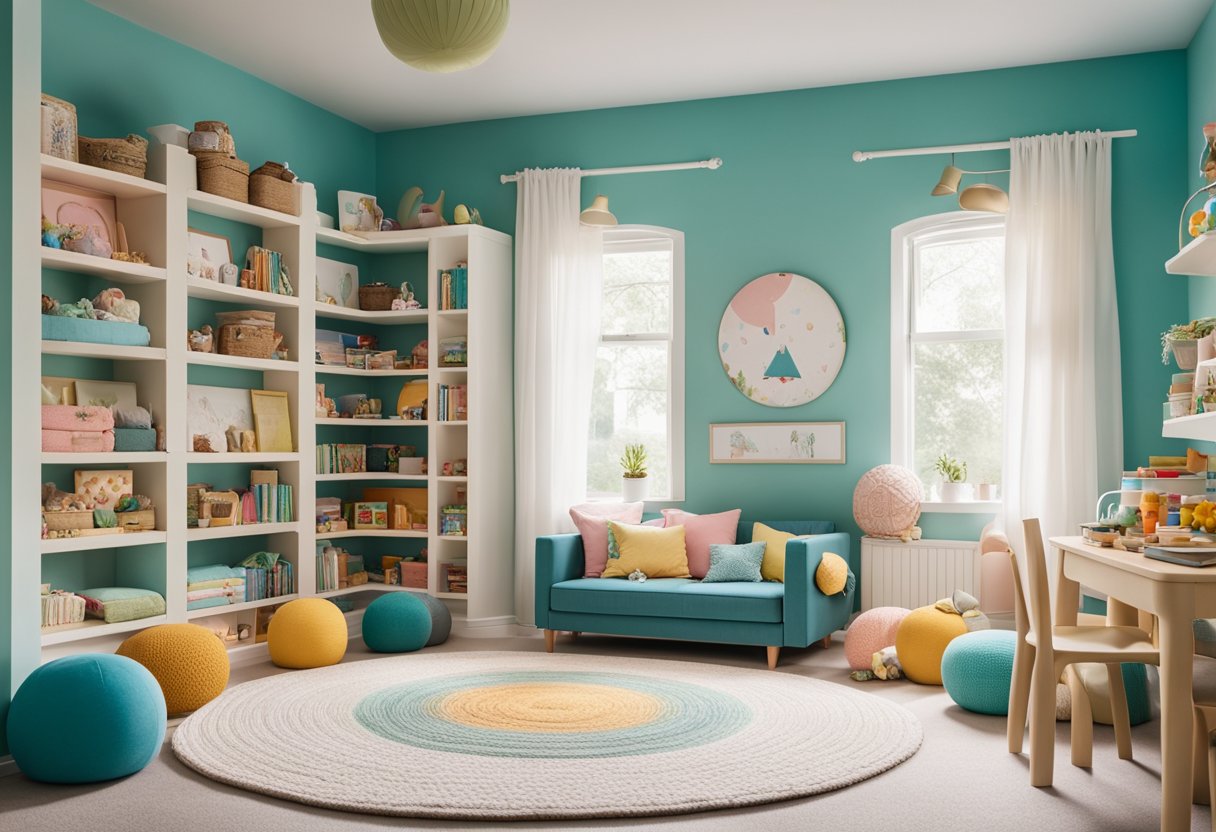
Designing a children’s bedroom or playroom can be an exciting and imaginative process! When it comes to children’s interior design, there are a few key factors to consider. In this section, we will explore the role of form and function, colour and pattern selection, and furniture and bedding essentials.
The Role of Form and Function
When designing a children’s bedroom or playroom, it’s important to consider both form and function. Aesthetics are important, but so is practicality. You want to create a space that is playful and imaginative, but also safe and functional. Consider the scale of the room and the furniture, as well as the storage needs of your child. Flexible furniture pieces, such as bunk beds or convertible cribs, can be a great way to maximize space.
Colour and Pattern Selection
Colour and pattern selection can have a significant impact on the overall feel of a room. Bright colours and playful patterns can stimulate creativity and imagination, while a more muted colour palette can create a calming atmosphere. When selecting colours and patterns, consider your child’s preferences and personality. Wooden furniture can be a great addition to a room with white walls as it adds warmth and texture.
Furniture and Bedding Essentials
When it comes to furniture and bedding essentials, safety should be a top priority. Make sure all furniture pieces are sturdy and secure, and avoid anything with sharp edges or small parts that could be a choking hazard. Bedding should be comfortable and durable, and consider investing in waterproof mattress protectors in case of accidents. Additionally, storage solutions are important to keep the room organized and clutter-free.
In summary, when designing a children’s bedroom or playroom, it’s important to consider both aesthetics and practicality. The role of form and function, colour and pattern selection, and furniture and bedding essentials are all important factors to consider. By creating a space that is playful, imaginative, and safe, you can inspire creativity and imagination in your child.
Creating Enchanting Spaces
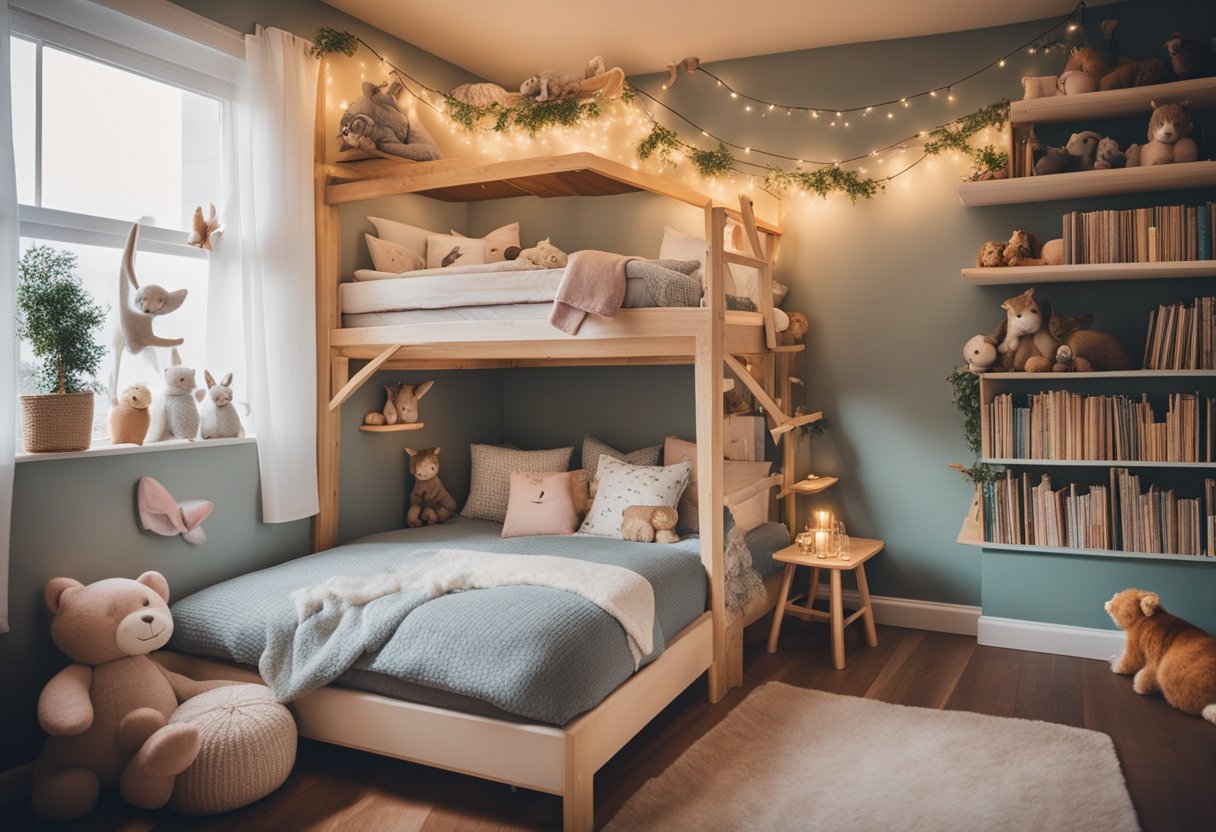
Designing a child’s bedroom or playroom can be an exciting and fun project. With a little creativity and imagination, you can create a space that not only looks adorable but also inspires your child’s creativity and imagination. Here are some tips for creating enchanting spaces that your child will love.
Innovative Storage Solutions
When designing a child’s room, storage is key. Innovative storage solutions can help keep clutter at bay and make the room feel more spacious. Cupboards, cubbies, shelves, baskets, and bins are all great storage options that can be used to store toys, books, and clothes. Howe shelving is a popular choice for children’s rooms as it is versatile and can be easily adapted to meet your child’s changing storage needs.
Incorporating Play and Learning
A child’s room should be more than just a place to sleep. It should also be a place where they can play and learn. Consider incorporating a play area into the room with a small playground or a play tent. You can also add a desk or table for your child to do homework or art projects. Wall art and wallpaper can be used to create a lively and playful atmosphere that inspires creativity.
Artwork and Accessories That Inspire
Artwork and accessories can be used to add personality and inspiration to a child’s room. Wall art, such as posters or framed prints, can be used to create a focal point in the room. Accessories like cushions, throws, and rugs can add comfort and warmth to the space. Lighting is also an important consideration. A mix of ambient and task lighting can help create a comfortable and functional space.
In conclusion, creating an enchanting space for your child is all about incorporating elements of playfulness, creativity, and comfort. With the right storage solutions, play areas, and artwork, you can create a space that inspires your child’s imagination and helps them feel at home.
Frequently Asked Questions
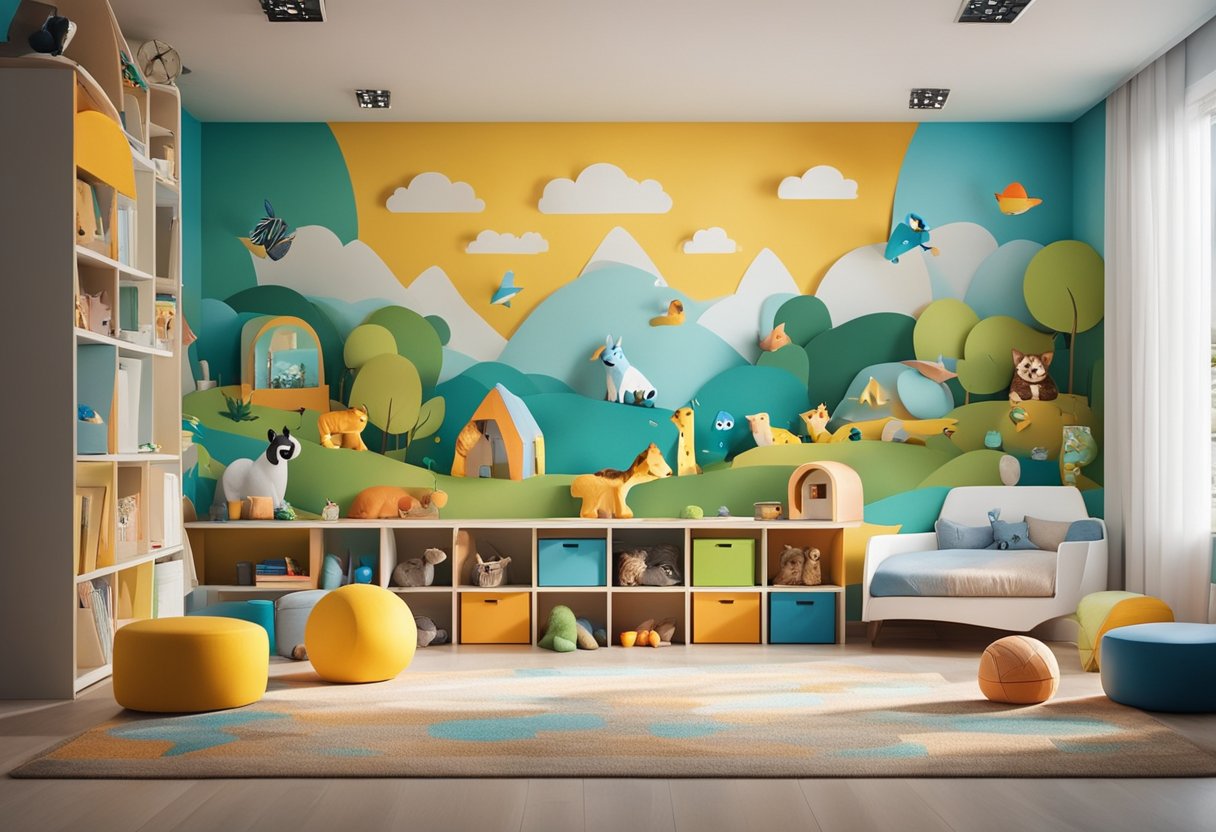
How can I create a stimulating and fun environment in my child’s bedroom?
Creating a stimulating and fun environment in your child’s bedroom is essential for their development and happiness. You can achieve this by incorporating bright colours, playful patterns, and interactive elements into the room design. Consider adding a colourful rug, fun wall decals, and a teepee or play tent for your child to enjoy. You can also add a chalkboard or whiteboard to encourage your child’s creativity.
What are the most exciting colour schemes for a modern toddler’s room?
The most exciting colour schemes for a modern toddler’s room are bright and bold colours that stimulate their imagination and creativity. Consider using a mix of primary colours, such as red, blue, and yellow, or incorporating pastel shades for a softer look. You can also use colour blocking to create a playful effect.
What furniture should I consider for maximising space in my child’s bedroom?
Maximising space in your child’s bedroom is essential, especially if you have a small room. Consider using multi-functional furniture, such as a bunk bed with built-in storage or a desk with shelves. You can also use wall-mounted shelves to keep the floor space free and create a clutter-free environment.
How can I incorporate educational elements into my child’s room design?
Incorporating educational elements into your child’s room design is an excellent way to promote learning and creativity. Consider adding a world map, alphabet posters, or a chalkboard wall. You can also use storage bins with labels to teach your child organisation and categorisation skills.
What are the latest trends in creating a playful yet practical space for children?
The latest trends in creating a playful yet practical space for children include using natural materials, such as wood and wicker, and incorporating indoor plants for a fresh and calming effect. You can also use neutral colours and add pops of colour with accessories, such as cushions and rugs.
How can I ensure my child’s room design is adaptable as they grow older?
Ensuring your child’s room design is adaptable as they grow older is essential to save you time and money in the long run. Consider using neutral colours for the walls and furniture, and add pops of colour with accessories that can be easily changed. You can also use furniture that can be adjusted, such as a desk that can be raised or lowered.

